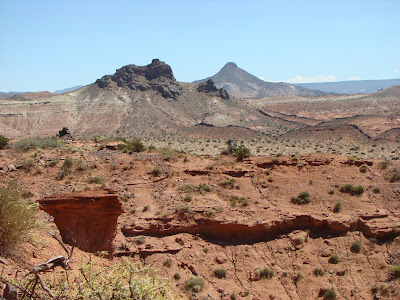
One dinosaur species was an evolutionary offshoot with a strange-shaped head and 600 teeth. The other was more primitive, remaining almost unchanged for 40 million years and surviving long after supposedly more evolved relatives went extinct in other parts of the world.
Two newly discovered species of large, long-necked, plant-eating dinosaurs from Niger illustrate the widely differing paces of evolution.
“There seems to be no preference in rate [of evolution],” says University of Chicago paleontologist Paul Sereno, lead author of an article in Friday’s Science describing the new dinosaurs. “I don’t know if we could have predicted that. We are the first to really show it.”
The Unchanging Dinosaur
In the steady and unchanging crowd is Jobaria tiguidensis, a 20-ton, 70-foot-long cousin of Apatosaurus (a genus better known to many as Brontosaurus), Diplodocus and other sauropod dinosaurs. (Jobar is a mythical creature among North African nomads; tiguidensis refers to cliffs near the discovery site.)
What’s most intriguing about Jobaria is not its features, but that it appeared to be living in the wrong era. The two Jobaria specimens excavated by Sereno’s team, one adult and a smaller juvenile, date to about 135 million years ago, or after Apatosaurus and Diplodocus, which roamed in North America, had already died out.
But in appearances, Jobaria is more primitive than its earlier North American cousins. Its neck is relatively short, with only 12 neck bones, vs. 15 or more in more evolved sauropods, and it has spoon-shaped teeth, like the early sauropods, rather than the pencil-shaped teeth of later versions.
“It looks like it comes out of the Jurassic,” Sereno says, referring to the period from 200 million to 135 million years ago. “It’s sort of hanging on in Africa and doing quite well.”
Different Teeth for Different Food
Spoon-shaped teeth may have been more suited to dining on conifers, while pencil-shaped teeth are believed to be better fern munchers, possibly reflecting a shift in vegetation. Longer-necked sauropods have greater reach.
At this time, the southern supercontinent of Gondwana was breaking up into Africa and South America, which may have provided Jobaria an isolated ecological niche. Perhaps African forests were richer in conifers than those elsewhere.
Or, “It could just be chance,” Sereno says. “I don’t know we have any reason to believe Africa was much different from any other place.”
Long-lived species are not a new discovery. Coelacanths, for example, have been swimming the oceans for 400 million years, and horseshoe crabs have been around for even longer.
Dino With Darth Vader Head
Sereno and his co-workers dub the second sauropod they found Nigersaurus taquetti, a small, 50-foot-long sauropod that lived about 110 million years ago.
And a toothy dinosaur, too. “There are 140 teeth exposed when it smiles,” Sereno says. And stacked behind each pencil-shaped tooth are up to seven replacements, ready to pop down when the tooth in front falls out. (Think of a stack of Dixie cups.)
In all, Nigersaurus had more than 600 teeth, giving the skull an angular shape unlike other sauropods. “It’s either Darth Vader or a Hoover vacuum cleaner,” Sereno says. “It is the most bizarre sauropod that has been found in years.”
Unlike the persisting shape of Jobaria, Nigersaurus evolved its unusual appearance relatively quickly, in a few million years.
Ecological conditions probably are what causes some dinosaurs to transform radically in appearance in a short period of time, while others persist almost unchanged for millions of years.
Same as the Old One
Evolution did not halt within Jobaria, and over millions of years mutations shifted its DNA.
“That dinosaur was almost certainly very well adapted to its environment,” says Blair Hedges, an evolutionary biologist at Penn State University. Thus, natural selection just kept selecting the new one that looked like the old one, even though details in its genetic code changed.
For more information related to dinosaurs, visit rareresource.com.

0 comments:
Post a Comment